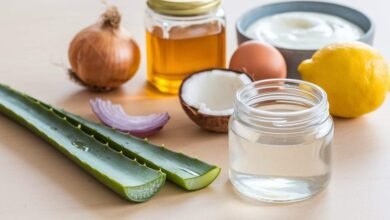Simple Methods: How to Make Coconut Oil at Home
Learn the simple methods of how to make coconut oil at home. Follow our comprehensive guide now and enjoy the benefits of homemade coconut oil!
Introduction to Coconut Oil
What is Coconut Oil?
Coconut oil is an oil product that is produced from the coconut kernel that is gotten from the tree scientifically referred to as Cocos nucifera. As a result of its unique taste coconut oil is postulated as healthy product and is used in culinary and confectionery industries and in beautification and medicine. Its consumption has rapidly increased in the recent past due to high nutritional as well as health values and its versatility.
Types of Coconut Oil
There are several types of coconut oil, each with distinct characteristics and uses: It is noteworthy that at present there is a great variety of coconut oil products that are presented and differ in their characteristics:
- Virgin Coconut Oil (VCO): This product is produced from coconut kernel which is exclusive of the outer hard shell of the fresh coconut immediately it is harvested from the tree and this does not undergo any process that makes it undergo any chemical transformation at any one time.
- Refined Coconut Oil: Derived from dried coconut kernel copra, the material which goes through a chemical process to have odor and taste as not to be remarked.
- Fractionated Coconut Oil: From where all the long-chain fatty acids are removed; this results into an oil that is liquid under ambient conditions and applied in cosmetics. Different Methods of Making Coconut Oil Traditional Method The other common technique is grating fresh coconut meat, squeezing out its milk, and then heating it to obtain the oil. This process is time-consuming, but it provides the best quality oil that has strong flavors of coconut. Cold-Pressed Method Organic virgin includes cold-press processing of fresh coconut meat applying pressure to extract the oil without heat, the method retains more nutrition and yields a genuine and less contaminated coconut flavor.
Wet Milling Method
For the wet texturized process, the white coconut meat is soaked in water and churned to extrude the liquid known as the coconut milk, and then proceed to the separation of the oil by fermentation, heat treatment, or use of centrifugal machine.
Centrifuge Method
That is a simple technique of employing a machine nicknamed as a centrifuge whereby the oil will be made to segregate in a short span from the coconut milk, thereby leading to pure coconut oil with very little additional processing.
Fermentation Method
The applied method for fermentation comprises allowing the coconut milk to ferment at room temperatures for 24-36 hours and once coagulated separating the oil from the water and curd, to get the superior quality of oil.
Ingredients and Tools Needed
Selecting the Right Coconuts
It has also been observed that the quality of coconut oil depends with the quality of coconut used as raw material. The favorable types of coconuts are the mature but fresh kinds. They should not have any sign of mold and be adequately packed with lots of meat and water.
Necessary Equipment and Tools
Depending on the method, the following tools and equipment are typically needed:
- Grater or Food Processor: For shredding the coconut meat.
- Cheesecloth or Fine Mesh Strainer: For filtering the milk.
- Large Pot or Saucepan: For boiling (if using the traditional method).
- Cold-Press Machine: For cold-pressed oil.
- Centrifuge Machine: For the centrifuge method.
- Glass Jars or Bottles: For storing the final product.
Step-by-Step Guide: Traditional Method

Preparing the Coconuts
- Crack Open the Coconuts: These nuts should be split using a hammer or a heavy knife as they are hard to crack open.
- Extract the Meat: As for prying out the meat, this can be done with a knife, or a coconut tool in the case of young coconuts.
- Grate the Coconut Meat: They need to be ground till they are very fine; this, of course, could be easily done in a grinder or food processor. Extracting the Coconut Milk
- Blend the Grated Coconut: Thus, take the grated coconut and remove water from the mixture using a blender.
- Strain the Mixture: for this, wet the cheesecloth or the fine mesh strainer spread it over a bowl, and filter it to separate milk from the solids. Heating and Separating the Oil
- Boil the Coconut Milk: Pour the coconut milk into a large sauce pot and warm it up over a medium flame.
- Simmer and Stir: Heat the milk gradually with occasional stirring to allow the water part to evaporate, and the oil to separate with the curd formation.
- Cool and Strain: This should be allowed to cool before filtering the oil with the aid of a cheesecloth to eliminate the solids. Storing the Coconut Oil
- Pour into Containers: Spoon the oil into clean, dry glass jars or bottles.
- Seal and Store: Screw the lid on really well then shake before storing the container where it is dry, cold, and away from light. Coconut oil, when prepared well should be able to last for several months. Step-by-Step Guide: Cold-Pressed Method Preparing the Coconuts
- Crack Open the Coconuts: Open the coconuts with the help of a hammer or any heavy knife.
- Extract the Meat: Put the knife to remove the meat from the shell.
- Grate or Shred the Coconut Meat: When the coconut is ripe you can scrape the white portion and grind it using a hand grater or a food processor. Extracting the Coconut Meat
- Press the Meat: First you should feed the shredded coconut meat into a cold-press machine.
- Collect the Oil: Pump the meat to extract the oil while avoiding heat since this would reduce the nutrients of the meat. Filtering and Storing the Oil
- Filter the Oil: You may want to use a cheesecloth or fine mesh strainer to remove all the solids that have not dissolved well in the mixture.
- Store the Oil: When the oil has been strained, transfer it to clean glass jars or bottles and tightly lid then keep it in a trefrigerator away from direct sunlight.
Step-by-Step Guide: Wet Milling Method
Preparing the Coconuts
- Crack Open the Coconuts: To prepare the coconuts, the top part must be chopped off using a hammer or a heavy knife.
- Extract the Meat: Push up the meat with a knife or coconut utensil after removing the shell.
- Grate the Coconut Meat: The meat can be ground a little more finely using the help of a hand grater or a kitchen appliance known as a food processor.
Extracting Coconut Milk and Cream
- Blend the Grated Coconut: Add water and blend the ingredients containing grated coconut.
- Strain the Mixture: It is advisable, after boiling, to sieve the milk using a cheesecloth or a fine mesh strainer to get rid of the solids.
Using the Wet Milling Process
- Ferment the Milk: Ideally, what has been prepared should be allowed to ferment for about 24 hours, that is before preparing the next process.
- Separate the Oil: It will float on top of the other components because oil has a lower density than most components that may contaminate it. Skim it off carefully.
Collecting and Storing the Oil
- Filter the Oil: Finally, it is possible to use a clean cheesecloth to strain out any other residue or undesirable elements.
- Store the Oil: Pour the oil into clean glass jars or bottles with screw-on lids, closing them well, and keep the honey in a more suitable cool and dark place.
Step-by-Step Guide: Centrifuge Method
Preparing the Coconuts
- Crack Open the Coconuts: To open the coconuts, you will often have to break them using a hammer or even a heavy knife.
- Extract the Meat: Use a knife to carefully shave the meat away from the shell.
- Grate or Shred the Coconut Meat: To prepare the meat chop it with a hand grater or food processor, and the meat should have a fine grate.
Extracting Coconut Milk
- Blend the Grated Coconut: To prepare this dish first grate the coconut and blend it in a blender with some water added to it.
- Strain the Mixture: Then, to remove these solids and get the milk, the use of a cheesecloth or a fine mesh strainer is used.
Using the Centrifuge Machine
- Process the Milk: The final step of the described procedure involves transferring the coconut milk to the centrifuge machines.
- Separate the Oil: This means that for the oil water and the solids of the milk to be separated, the machine will spin the milk.
Storing the Coconut Oil
- Filter the Oil: Last of all, while completion, for the recognition of any unfiltered particles that may remain dissolved in the extract it is useful to use a cheesecloth.
- Store the Oil: Drain and pour the oil into clean glass containers and ensure that the caps/ lids are screwed tight and stored in a cool, dry, and dark area away from sunlight.
Step-by-Step Guide: Fermentation Method
Preparing the Coconuts
- Crack Open the Coconuts: First of all, take the husk of the coconut and using a hammer or a heavy knife scrape the outer top layers lightly to break it to open it up.
- Extract the Meat: some of the tendons may still be attached to the meat; put on a pair of gloves and use a knife or a coconut cutter to scoop out the meat.
- Grate the Coconut Meat: This should preferably be done with a hand grater, or even with a food processor though the use of a conventional grater should also be alright.
Fermenting the Coconut Milk
- Blend the Grated Coconut: Before preparing the dish the ingredients need to be prepared and; for the grated coconut, a certain amount of water need to be blended in the blender to get a paste.
- Strain the Mixture: In order to achieve clear milk, it is used preferred to skim the milk by pouring it over a cheesecloth and this will make the milk to easily transfer to another container while the solids are left behind.
- Ferment the Milk: This fermented coconut milk can be used at once after preparing it, though to be better fermented, the mixture should be placed in a clean container to ferment for 24-36 hrs.
Collecting and Storing the Oil
- Separate the Oil: During fermentation, all these ingredients will become Mexican smooth except the oil which will be floating on top of the liquid. Skim it off carefully.
- Filter the Oil: As the agar is still a bit liquified, you can attempt to cheesecloth it, to get rid of most of the other stuff that is still afloat.
- Store the Oil: Bottle the oil and store it in a cool, dry, dark, and well-ventilated place because heat and light harm the oil.
Tips for Making High-Quality Coconut Oil
Choosing the Best Coconuts
- Mature Coconuts: The accompanying tips that are discussed below need to be followed when people are searching for the proper coconuts for making coconut water: The coconuts should be ripe and this means that they would be heavy.
- Freshness: Ensure that the coconuts have not spoiled, or they have signs of mold or an ugly coat on their surface.
- Origin: However, it’s advisable to consider the kind of coconuts used because the quality of coconuts varies depending on the region.
Ensuring Proper Hygiene
- Clean Equipment: Seemingly, there is a need to ensure that all tools and equipment used in any form are cleaned before being used in any activity.
- Sanitary Conditions: Jimi: As much as possible don’t risk ruining the outcome you have set by having the work environment polluted.
Storing the Oil Correctly
- Avoid Light and Heat: Quality should be kept very crucial as it can be degraded by aspects such as light, heat, air and water and thus the best place is in a cool dark area.
- Use Airtight Containers: This is because exposing the lids of the seal containers to the air increases their ability to oxidize the contents of the food and make it stale.
Conclusion Of How To Make Coconut Oil:
This is why it is very easy to make your coconut oil from scratch, and very rewarding when you decide to do so because of the numerous health benefits. This makes the guide as comprehensive as can be – from details of the process of selecting coconuts, to which method of extraction is appropriate, the reader is provided with all the information that he or she would require to obtain the finest coconut oil.Also follow us on Medium And Pinterest.
- Top 10 Moisturizers for Every Skin Type
- Top 6 Benefits of Primose Oil For Skin.
- My Dental Healthy Journey
- Understanding Hair Porosity: Tests, Tips, and Care Routines
- Top 10 Amazing Benefits of Rose Water for Skin
- Aloe Vera Hair Masks for Healthy and Beautiful Hair
- Natural Ways to Remove Sun Tan Fast
- How to Get Thick Hair: Simple Habits for Thicker, Longer Hair
- Is Jojoba Oil Good for Low Porosity Hair?
- Top 7 Skin Benefits of Batana Oil
- DIY Face Masks for Glowing Skin: Natural Remedies
- Natural Remedies for Clear Skin: Glow Naturally
- Rosehip Oil for Acne Scars: Does It Really Work?
- Almond Oil for Hair: Tips for Thicker Locks
- Top 10 Natural Remedies to Stop Hair Fall



















One Comment